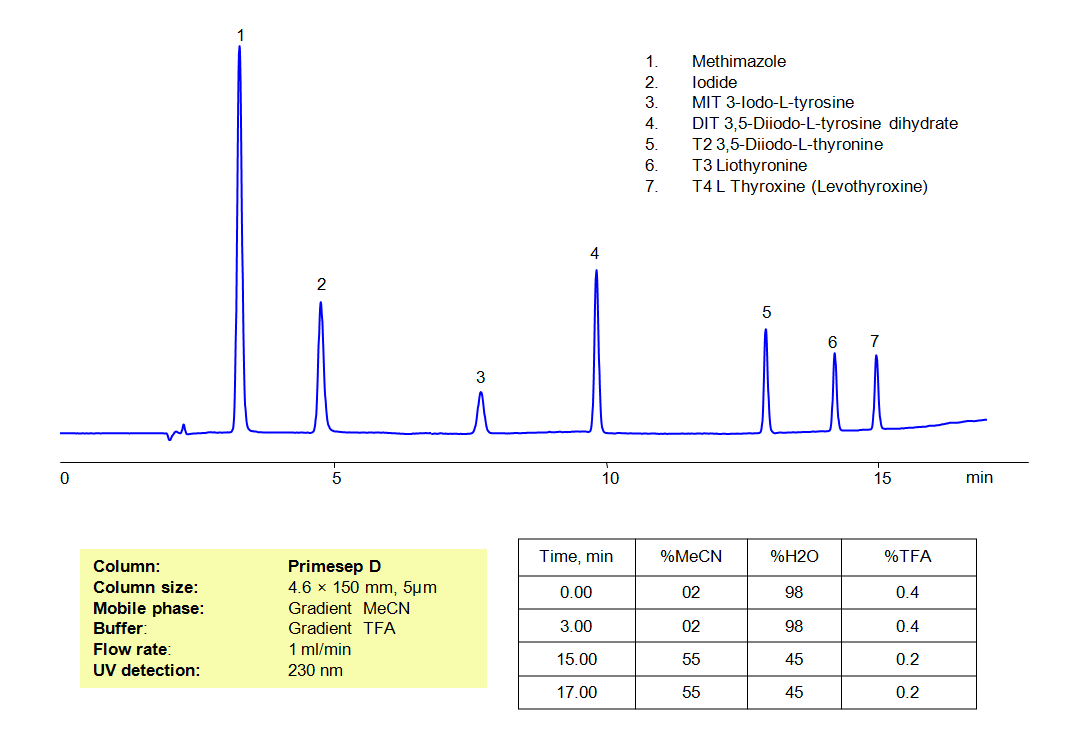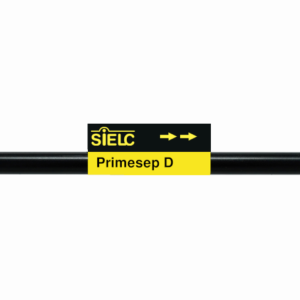HPLC Method for Iodine, Methimazole, Levothyroxine (T4), 3,5-Diiodo-L-thyronine (T2), 3,5-Diiodo-L-tyrosine dihydrate (DIT), 3-Iodo-L-tyrosine (MIT), Liothyronine (T3), Iodide on Primesep D by SIELC Technologies
High Performance Liquid Chromatography (HPLC) Method for Analysis of Iodine, Methimazole, Levothyroxine (T4), 3,5-Diiodo-L-thyronine (T2), 3,5-Diiodo-L-tyrosine dihydrate (DIT), 3-Iodo-L-tyrosine (MIT), Liothyronine (T3), Iodide
Iodine is an important element in production of thyroid hormones, T3 and T4, which are essential regulators of organism’s metabolism. The glands’ concentration of Iodide, hormones T3 and T4, along with their precursors: 3,5-Diiodo-L-thyronine (T2), 3,5-Diiodo-L-tyrosine (DIT), and 3-Iodo-L-tyrosine (MIT) can now be studied simultaneously with this HPLC method. In order to analyze the hydrophobic hormones along with iodide (a very polar inorganic ion) a special mixed-mode column, Primesep D, was used. This column provides both strong hydrophobic and anion exchange properties. The Primesep D silica-bonded ligand is comprised of a long alkyl chain and an embedded amino functional group. The TFA was used as an ionic modifier to provide stable acidic pH and sufficient ion strength for the mobile phase. The mobile phase composition is suitable for UV, MS, ELSD, and CAD detection.
| Column | Primesep D, 4.6 x 150 mm, 5 µm, 100 A, dual ended |
| Mobile Phase | MeCN |
| Buffer | TFA |
| Flow Rate | 1.0 ml/min |
| Detection | UV, 230 nm |
| Class of Compounds | Drug, Hydrophilic, Ionizable, Supplements |
| Analyzing Compounds | Iodine, Methimazole, Levothyroxine (T4), 3,5-Diiodo-L-thyronine (T2), 3,5-Diiodo-L-tyrosine dihydrate (DIT), 3-Iodo-L-tyrosine (MIT), Liothyronine (T3), Iodide |
Application Column
Primesep D
Column Diameter: 4.6 mm
Column Length: 150 mm
Particle Size: 5 µm
Pore Size: 100 A
Column options: dual ended
3,5-Diiodo-L-tyrosine dihydrate (DIT)
3-Iodo-L-tyrosine (MIT)
Iodide
Iodine
Levothyroxine (T4)
Liothyronine (T3)
Methimazole






